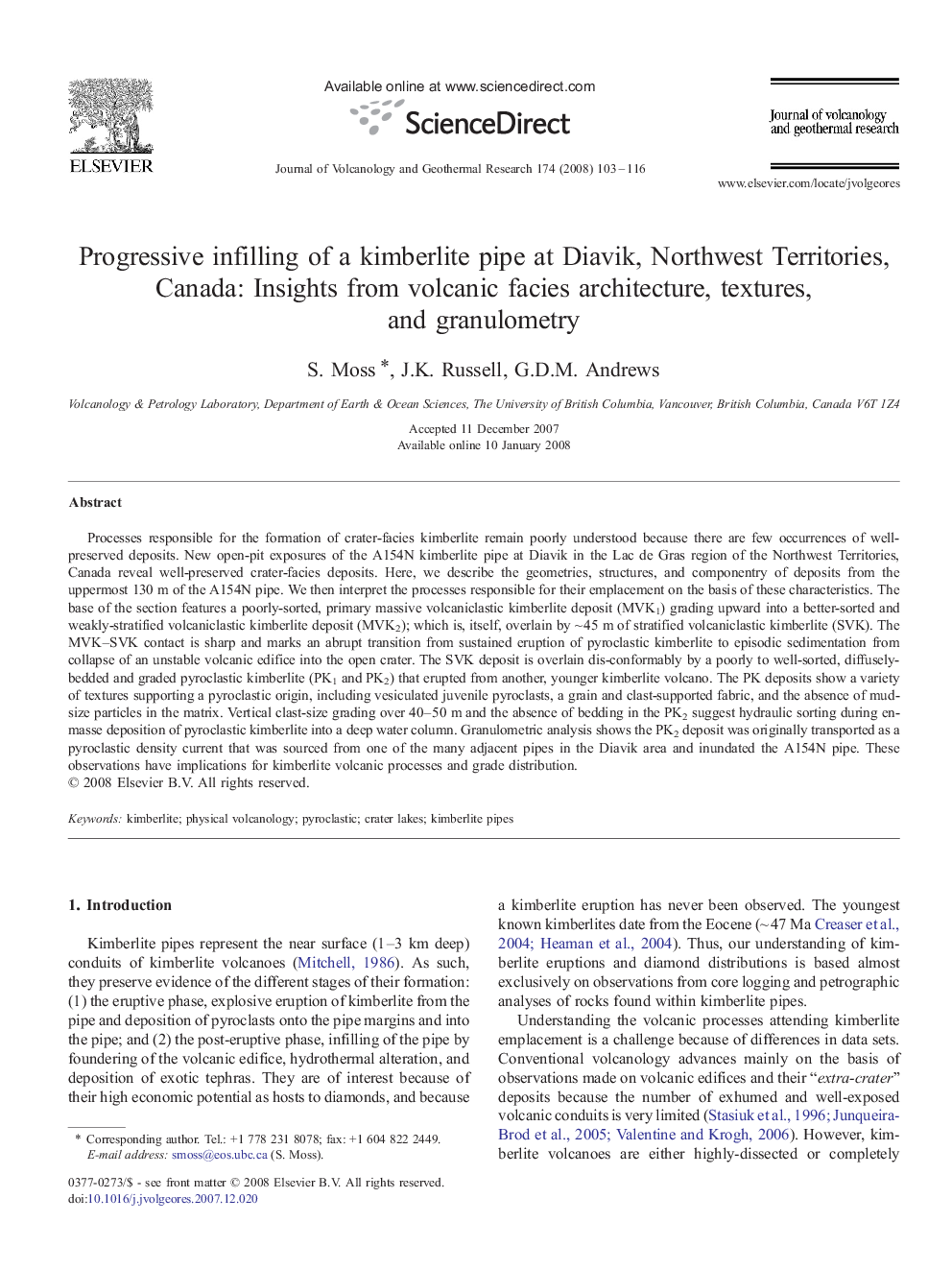| Article ID | Journal | Published Year | Pages | File Type |
|---|---|---|---|---|
| 4714767 | Journal of Volcanology and Geothermal Research | 2008 | 14 Pages |
Abstract
Processes responsible for the formation of crater-facies kimberlite remain poorly understood because there are few occurrences of well-preserved deposits. New open-pit exposures of the A154N kimberlite pipe at Diavik in the Lac de Gras region of the Northwest Territories, Canada reveal well-preserved crater-facies deposits. Here, we describe the geometries, structures, and componentry of deposits from the uppermost 130Â m of the A154N pipe. We then interpret the processes responsible for their emplacement on the basis of these characteristics. The base of the section features a poorly-sorted, primary massive volcaniclastic kimberlite deposit (MVK1) grading upward into a better-sorted and weakly-stratified volcaniclastic kimberlite deposit (MVK2); which is, itself, overlain by ~Â 45Â m of stratified volcaniclastic kimberlite (SVK). The MVK-SVK contact is sharp and marks an abrupt transition from sustained eruption of pyroclastic kimberlite to episodic sedimentation from collapse of an unstable volcanic edifice into the open crater. The SVK deposit is overlain dis-conformably by a poorly to well-sorted, diffusely-bedded and graded pyroclastic kimberlite (PK1 and PK2) that erupted from another, younger kimberlite volcano. The PK deposits show a variety of textures supporting a pyroclastic origin, including vesiculated juvenile pyroclasts, a grain and clast-supported fabric, and the absence of mud-size particles in the matrix. Vertical clast-size grading over 40-50Â m and the absence of bedding in the PK2 suggest hydraulic sorting during en-masse deposition of pyroclastic kimberlite into a deep water column. Granulometric analysis shows the PK2 deposit was originally transported as a pyroclastic density current that was sourced from one of the many adjacent pipes in the Diavik area and inundated the A154N pipe. These observations have implications for kimberlite volcanic processes and grade distribution.
Related Topics
Physical Sciences and Engineering
Earth and Planetary Sciences
Geochemistry and Petrology
Authors
S. Moss, J.K. Russell, G.D.M. Andrews,
